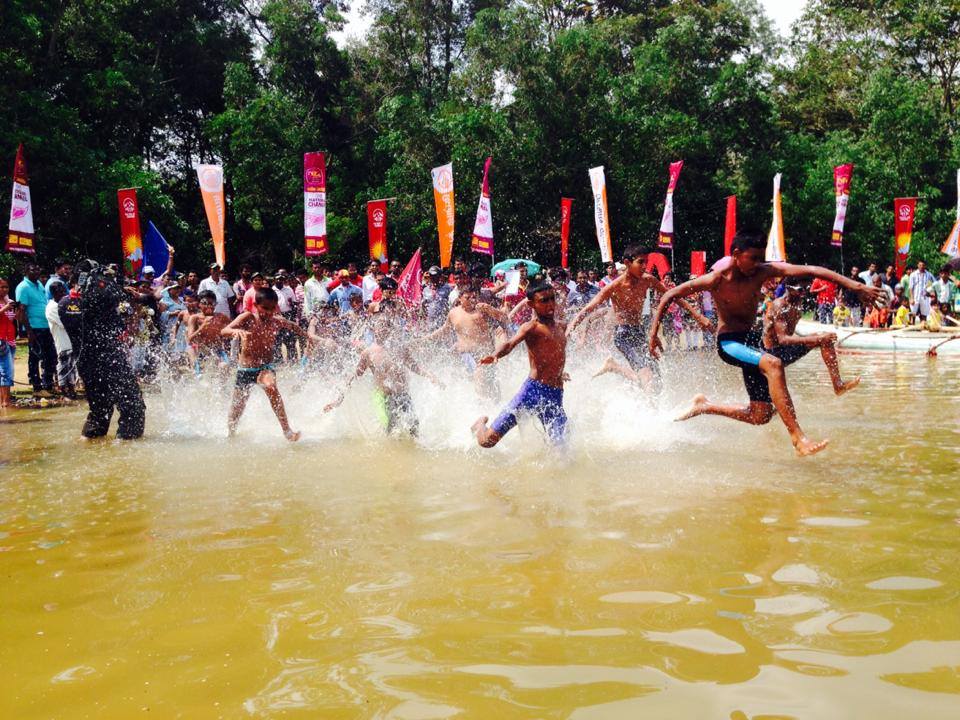Accidental drowning & safety measures
Other than rare instances of attacks due to water based beings most accidents occur due to neglect of precautionary measures prior to and after entering a watery enclave. Such accidents mainly relate to the under mentioned factors.
- Merely as a show off process novices try to carry out stunts for which they are not geared or capable of resulting in grave tragedies.
- Mental beliefs over taking physical swimming capabilities.
- Fear of cramps although merely by using hands could paddle to safety.
- Not swimming out of a reservoir at a mere hint of danger.
- Not cajoling physically weak or tired associates to continue and or push them under the water endangering their lives and future wellbeing creating permanent damage.
- Not clinging or hanging onto floating debris specially during floods as poisonous reptiles or insects also could be seeking the same safety option.
Safety measures to be mindful when jumping into a reservoir on your own.
Irrespective of any swimming capabilities many factors of safety has to be considered similar to precautions undertaken when crossing a road prior to entering a reservoir.as mentioned below.
- Not stepping in immediately after partaking in a meal.
- Same precaution if hungry without food.
- Rather than swimming on an empty stomach it is better to consume a slice of bread and a cup of tea prior to stepping into water.
- Do not step into water if there are any doubts on capability, physical inability or sickness.
- Severe cold or feverish conditions.
- Stepping in severely tired and/or from exposure to excessive sunlight.
- Not stepping into water from a point where no attention is prevalent by a third party.
- Drunken swimming is as dangerous as drunken driving.
- Better to carry out minor physical exercises prior to stepping into water.
- Prior to stepping into the sea or a large reservoir keep an object of identity at the point of entry.
- A pair of shorts is the most feasible attire.
- Always seek the advice of a trained instructor if available prior to stepping into water.
- Do not step into water at once but do so gradually.
- A weak swimmer should not move into deeper waters even with the aid of a tube.
- When using a tube always pull the inner circle of the tube toward you with your arms.
- Do not enter water whist chewing gum.
- Be mindful of slopes as such points are much deeper.
- Be careful of stepping into grassy water logged or grassy barren areas in haste not to get stuck in mud. Many have fallen into difficulties in the past as mud is a serious hazard.
- Prior to entry into water minor exercises or sprinkling the body with water is recommended.
- Better to save life rather than foolish showing off of what could be done to others.
- Water holes which had been excavated previously for earth or metal are used for swimming. Such locations are not equipped with details as to the depth of the water and poor swimmers should not step in.
- Be mindful of notices depicting safe time zones or relevant safety details prior to stepping in.
- Evaluate your ability to swim with regard to the depth of the water and length one could swim safely.
- Dry yourself after coming out of the water as wet clothing may lead to physical disorder.
- Never pretend to others by feigning that you are drowning. Others may fall into difficulties due to fear of danger.
- If you are not able to swim do not step into water beyond waist level of water.
- During periods of communicable diseases or pandemics are prevalent never step into ponds or reservoirs.
Stepping into water as a group
- Count the number entering the water prior to stepping in.
- A few to be vigilant without stepping in to the water to ensure the safety of others.
- To keep a rope, a plastic bottle, a piece of timber or some matter which could float for an emergency.
- People who are unable to swim should not be allowed to venture into deeper water by catamarans, boats or barges.
- Demarcate the specific area safe for swimming.
- Warn the people swimming into deeper and dangerous waters.
- Re-count the numbers immediately upon returning from the water to ensure none are missing.

